SLS vs Starship: Rocket Battle for the Moon
2nd Nov 2023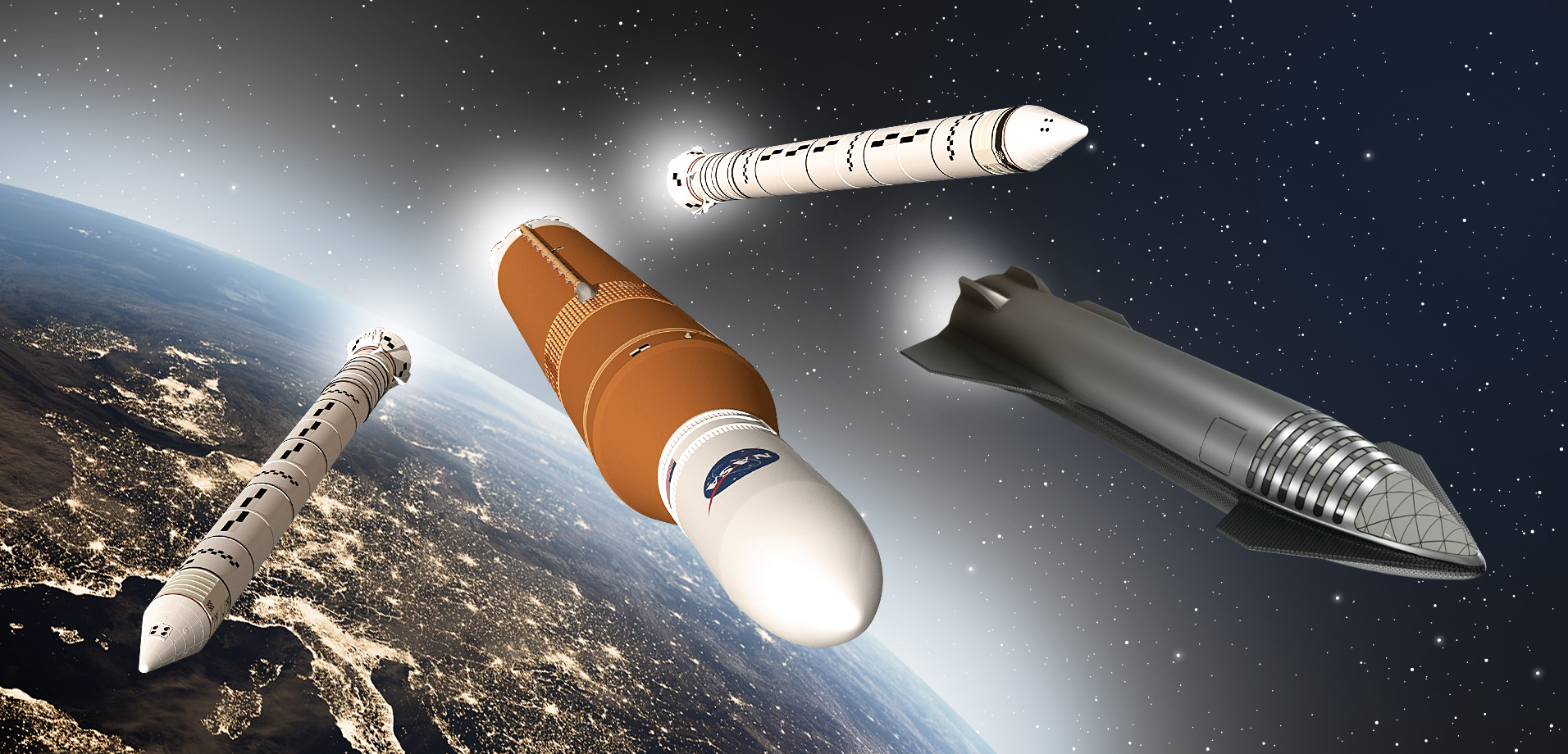
What will become the main transport in the upcoming colonisation of the Moon? Will the winner be an improvement over the legendary Saturn V? How does an SLS v Starship rumble turn out?
For more than half a century since the epoch of NASA astronauts landing on the Moon, no one else has been able to match this success. How did the USA manage to land humans on our satellite and return? They built a gigantic, super-powerful flight system to do this, consisting of the Saturn V launch vehicle, the Apollo spacecraft, and the lunar lander. This symbiosis worked successfully six times, but continued moonshots fell to the law of diminishing returns considering the technology – and budget -of the times. So, flights to the Moon had to be stopped until better times. And today, the time has finally come.
In 2019, US President Trump announced the launch of a new lunar program, Artemis. NASA looked to surpass the success of Apollo, and half a century of technological innovation had passed, it was time to choose a new system for delivering astronauts and cargo to the Moon.
There are options. Previously we compared Saturn V vs. Space X Starship as well as Blue Origin’s New Glenn vs Starship, and today, we want to focus on Starship and SLS — the two top contenders for the role of the main transport for the Artemis mission, and possibly for future interplanetary missions. So, make yourself comfortable; we are getting started with our Starship vs SLS comparison.
Moulded from Ares: The story of the SLS
SLS development began in 2011 as an alternative to the retired Space Shuttle. After the Columbia disaster in 2004, it became clear that the age of the shuttles was coming to an end, and the American space program needed a new ship. Back then, U.S. President George W. Bush announced the start of a new lunar program, Constellation.
The concept envisaged the creation of a system that would make it possible to deliver cargo to the ISS, build its own stations in orbit, deliver astronauts to the Moon, and, in the future, even build a new lunar space base there.
Thus, the Ares I launch vehicle project was born, which was based in part on using Shuttle equipment, including solid rocket boosters and RS-25 first-stage engines. Ares-1 had a payload capacity of only 25 tonnes, and its main task was to launch the Orion manned spacecraft to LEO. Ares-V, a superheavy modification of the rocket, was supposed to deliver cargo weighing up to 190 tons. This arrangement was an obvious nod to the legendary Saturn 1 and Saturn 5. But the fate of Ares rockets turned out to be short and unlucky.
In October 2009, Ares-1 made a partially successful test launch. During the separation of the 1st and 2nd stages, an unauthorised forward-jerk of the 1st stage occurred, caused by the burning out of fuel fragments torn off during separation. The 1st stage caught up with the mock-up of the 2nd stage and rammed it. A mock-up of the Orion spacecraft’s descent module fell into the sea along with its upper stage.
In January 2009, Barack Obama, who was much less interested in space flights than his predecessor, assumed the presidency of the United States, and the Constellation program was closed in 2010. However, Congress was categorically against this turn of events, and the White House administration had to compromise. As a result, it was decided to keep the Orion project and to create a new superheavy launch vehicle on the basis of Ares-V, which was called SLS.
What rocket will NASA use for Artemis?
Jumping a bit ahead, we can say that NASA is counting on both SLS and Starship. The corresponding contracts have already been signed. However, it is obvious that NASA will primarily use an option hopefully both more affordable option for the American taxpayers and superior in performance. Here, Ares-V’s successor has a head start. It has already completed its first launch as part of Artemis, while Starship keeps exploding in test launches. Who will win, SLS or Starship? Let’s take a closer look at the characteristics of Artemis rocket vs Starship and evaluate their chances.
Starship Vs. SLS Specs Comparison
| Feature | Space Launch System | Starship |
| Class | Super heavy-lift launch vehicle | Super heavy-lift launch vehicle |
| Developer | Boeing | SpaceX |
| Height | 98-111 m (depending on mod) | 120 m |
| Diameter | 8.4 m | 9 m |
| Mods | Block 1 Crew/Cargo Block 1B Crew/Cargo Block 2 Crew/Cargo | HLS (Crew) Cargo Lunar Lander Tanker |
| Stages | 2.5 Core Stage with side solid boosters, upper stage (Interim Cryogenic Propulsion Stage (Block 1) or Exploration Upper Stage (Block 1B, Block 2), Orion spacecraft | 2 Super Heavy Booster, Starship Spacecraft |
| Engines | Solid boosters — 2 Reusable Solid Rocket Motors-Five-Segment (PBAN) Core Stage — 4 Rocketdyne RS-25 (LH2/LOX) ICPS — 1 Rocketdyne RL-10 BE (LH2/LOX) EUS — 4 Rocketdyne RL10 С (LH2/LOX) | Super Heavy booster — 33 SpaceX Raptor-2 (CH4/LOX) Starship spacecraft — 3 Raptor-2, 3 Raptor Vacuum (CH4/LOX) |
| Payload capacity | 70 — 130 000 kg to LEO 27 000 — 43 500 kg to Trans-Lunar Injection | 100 000 — 150 000 kg orbit dependent |
| Payload volume | 988 cubic m | 1,083.5 cubic m |
| Development cost | $25 billion (in 2022) | $5 billion |
| Cost per launch | Up to 4.1 billion | 2 – 20 million |
| Reusability | No | Fully reusable |
| Launches | 1 | 0 |
The Main Differences Between SLS and Starship
Both rockets are modular vertical launch systems, which, today, are still considered optimal.
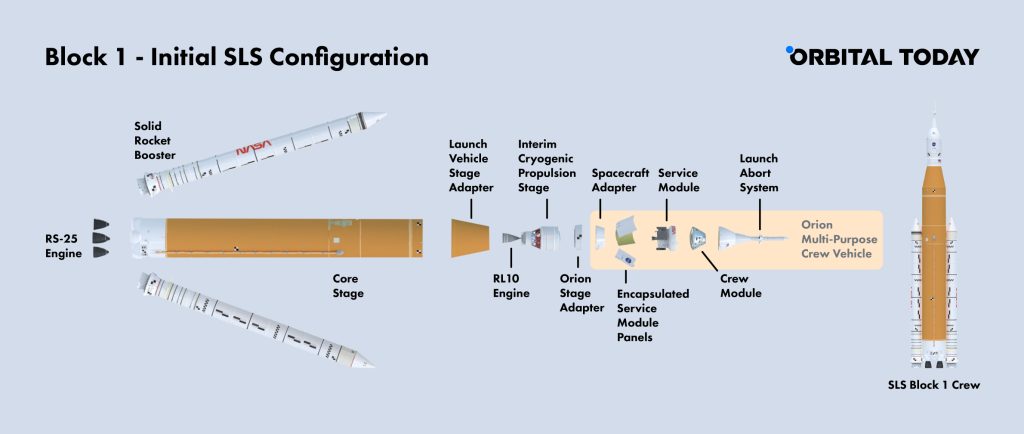
However, as you can see from the picture above, the design of the Space Launch System is more complex. Side boosters have been added to the SLS first stage (they are borrowed from the Shuttle, but due to more efficient engines, they are now 25% more powerful). Next is the second stage adapter, second stage, Orion Stage Adapter, Orion Spacecraft and Launch Abort System. Depending on the trajectory (LEO, TLI, Moon), the Boeing rocket has two upper-stage options and two Orion Spacecraft variations (Crew or Cargo). Thus, the SLS will have six configurations. For now, we can only talk about one — SLS Block 1 Crew.
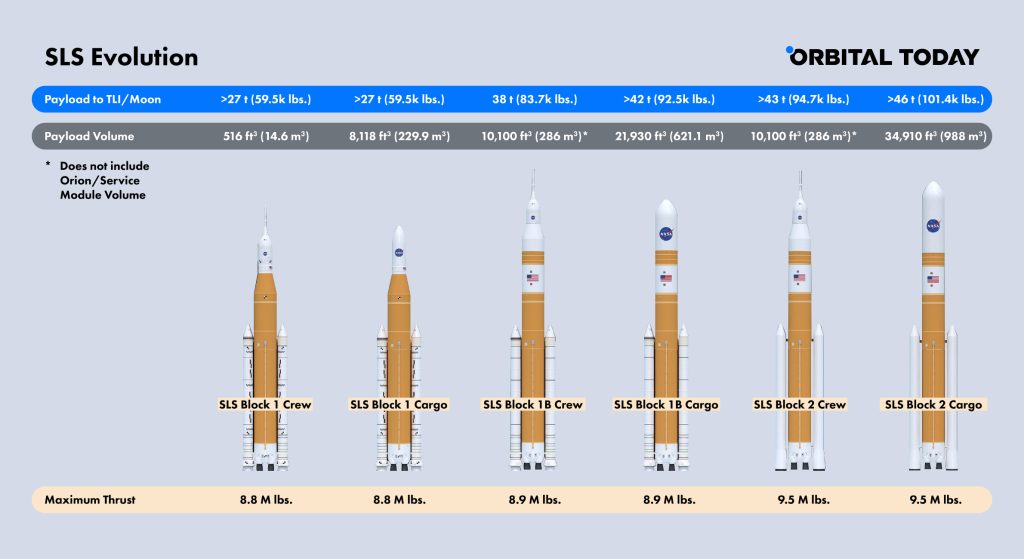
With Starship, everything is much simpler at first glance. The spacecraft consists of two stages. The first stage is an enhancement of the Falcon Super Heavy, and the second stage is the Starship Spacecraft, which will have four configurations — Starship HLS (Crew), Starship Cargo, Starship Lunar Lander, and Starship Fuel Tanker.
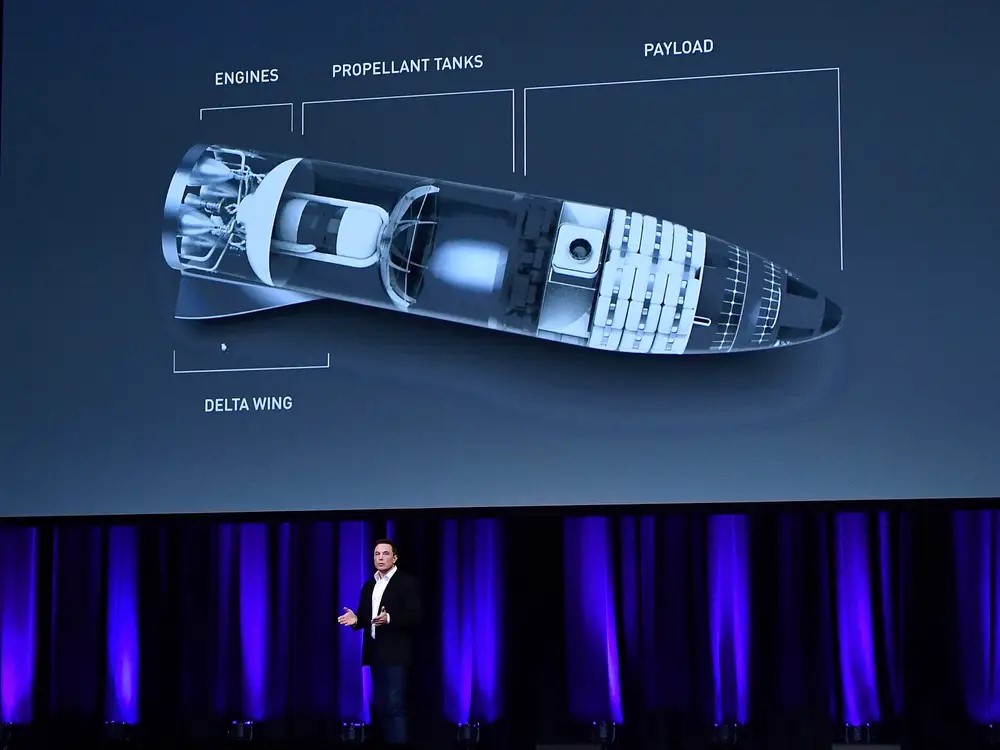
Is SLS more powerful than Starship?
No. SLS thrust is certainly impressive, but it varies depending on the configuration:
- SLS Block 1 — 8.8 million lbs.
- SLS Block 1B — 8.9 million lbs.
- SLS Block 2 — 9.5 million lbs.
At the same time, it’s worth considering that the lion’s share of traction comes from the side boosters (about 7 million), 1.5-2 million from the Core Stage, and the rest from the upper stages.
Starship has more than twice as much thrust as SLS. Super heavy produces 17 million lbs at launch, and the spacecraft, about 3 million.
Artemis rocket vs Starship: payload
The cargo configuration of the SLS will be able to send an impressive 130,000 kg to LEO, which is only 10 tons less than the Saturn V could. However, with the configuration for the lunar missions, the situation is much worse. Here, the payload capability varies from 27,000 to 43,500 kg, depending on the Space Launch System configuration.
Space X says its Starship system will be able to send over 100 tonnes (220,000 pounds) to LEO and 21 tonnes to GTO. And to send more than 100 tonnes to the Moon, this spacecraft will need a Starship tanker to refuel in orbit.
Is the SLS reusable?
No. Making the SLS external tank reusable was thought of as unfeasible. Although the Shuttle Main Engines (SSMEs) were reusable and planned for use on the SLS rocket, NASA decided not to reuse them. The same applies to the rest of the SLS rocket components. Refurbishment and recertification costs make reusing SLS parts more expensive than producing new ones. Additionally, Congress largely wanted to preserve job opportunities, so in 2011, the SLS mission included a requirement to use as many components as possible.
SpaceX, in turn, relies on spacecraft reusability. The Superheavy booster can be rebuilt after returning to Earth, as we can see from the Falcon rockets. The design of the spacecraft should make it reusable even under other planets’ conditions. To achieve this, SpaceX chose methane as a fuel, which produces almost no soot when burned, meaning that engine elements do not have to be cleaned of unburned fuel residues.
Cost of the Artemis rocket compared to Starship
Everything related to state enterprises, by definition, cannot be cheap. And the SLS was no exception. In 2019, Ars Technica reported that launching the Space Launch System rocket once a year could cost more than $2 billion, but if you sign a contract with Boeing for regular deliveries, the SLS launch cost could be reduced to $800 million. In March 2022, it was revealed that the costs could grow to $4.1 billion per launch. And that’s almost three times what it would cost to launch a Saturn V nowadays.
In November 2019, Musk said that launching Starship would cost between $2 and $20 million, depending on the mission’s purpose, with cost savings achievable by reusing the rocket. As we can see the maximum estimated SLS launch cost is more than 200 times higher than Starship.
Could the SLS go to Mars?
NASA announced such a possibility. But let’s consider the things realistically. If we imagine that SLS can send Orion to Mars and it gets there, how will it return without relaunch technology? At the very least, it’s a one-way ticket. And the second factor is the cost. If the SLS launch to the Moon is already estimated at $4 billion, how much will it cost to go to Mars?
Can Starship replace SLS?
As the SLS vs Starship comparison shows, it very much can. Starship is more powerful, more spacious, budget-friendlier, reusable, and finally, more flexible in terms of launch preparation. There is only one thing.
Starship is not ready. The last test in April 2023 ended with another Starship explosion. At the same time, SLS successfully completed the first lunar mission in December 2022 as part of the Artemis’s first stage. Orion circled the Moon twice at a distance of 80 km from the surface and returned to Earth.
Which rocket will be chosen for the Artemis III mission?
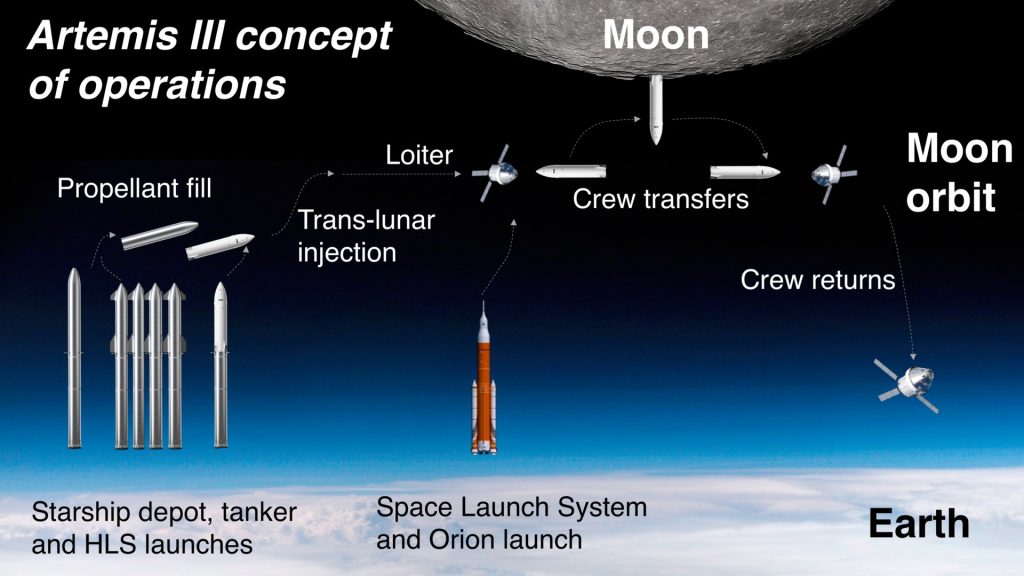
NASA expects both SLS and Starship to participate in the Artemis III mission. The goal of Artemis III is to land a crew in the South polar region of the Moon. During the mission, two astronauts will land on the surface of the Moon and spend about one week there. Space Launch System will launch four astronauts who will remain aboard Orion, while two astronauts launched on Starship HLS will walk on the lunar surface. They will conduct up to four outings, performing various scientific observations, including sampling water ice. Prior to their landing, additional equipment will be pre-positioned on the surface, including a lunar rover that astronauts can use during their tours.
As of November 2023, the Artemis III launch had delayed until 2026. The next Starship launch could happen as early as 17th Nobvember 2023. SpaceX and Elon Musk have at least two years to prove that, in the SLS vs Starship confrontation, their Starship rocket is unrivalled.
Sources:
- https://www.spaceflightinsider.com/hangar/sls/
- https://www.nasa.gov/wp-content/uploads/2023/07/0080-sls-fact-sheet-jun2023-508-1.pdf
- https://www.nasa.gov/wp-content/uploads/2020/02/sls_lift_capabilities_and_configurations_508_08202018_0.pdf
- https://en.wikipedia.org/wiki/Artemis_3
- https://www.spacex.com/media/starship_users_guide_v1.pdf

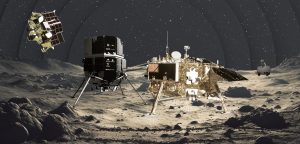

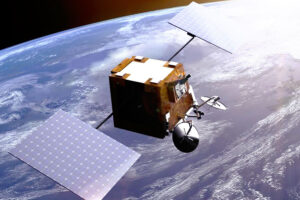


Thank you for your comment! It will be visible on the site after moderation.